No questions found
(a) Gallium has two stable isotopes, $^{69}\text{Ga}$ and $^{71}\text{Ga}$.
(i) Complete Table 1.1 to show the numbers of protons, neutrons and electrons in the two stable isotopes of gallium.
\[\begin{array}{|c|c|c|c|}\hline \text{isotope} & \text{number of protons} & \text{number of neutrons} & \text{number of electrons} \\ \hline {}^{69}\text{Ga} & & & \\ {}^{71}\text{Ga} & & & \\ \hline\end{array}\]
[2]
(ii) Define relative atomic mass.
............................................................................................................................................................
............................................................................................................................................................
............................................................................................................................................................
............................................................................................................................................................
[2]
(iii) The relative atomic mass of gallium, $A_{r}$, is 69.723.
The relative isotopic masses of $^{69}\text{Ga}$ and $^{71}\text{Ga}$ are:
\[\begin{align*} ^{69}\text{Ga}, &\quad 68.926; \\ ^{71}\text{Ga}, &\quad 70.925. \\ \end{align*}\]
Use this information to calculate the percentage abundance of $^{69}\text{Ga}$ in elemental gallium.
Show your working.
Assume that the element contains only the $^{69}\text{Ga}$ and $^{71}\text{Ga}$ isotopes.
Give your answer to four significant figures.
percentage abundance of $^{69}\text{Ga}$ = .............................. \%.
[2]
(b) Potassium also has two stable isotopes. Both isotopes have the same chemical properties.
(i) Explain why both isotopes of potassium have the same chemical properties.
............................................................................................................................................................
............................................................................................................................................................
[1]
(ii) State the full electronic configuration of an atom of potassium.
............................................................................................................................................................
[1]
(iii) The first, second and third ionisation energies of potassium are 418, 3070 and 4600 kJ mol$^{-1}$, respectively.
Use this information to explain why potassium is in Group 1.
............................................................................................................................................................
............................................................................................................................................................
............................................................................................................................................................
............................................................................................................................................................
[2]
Magnesium shows reactions typical of a Group 2 metal.
(a) Draw a labelled diagram to show the bonding in magnesium metal. [2]
(b) Fig. 2.1 shows some reactions of magnesium and its compounds.
\[ \text{} \]
(i) Identify the other products of reactions 1 and 2.
reaction 1 .........................................................
reaction 2 ......................................................... [2]
(ii) Reaction 3 is used to form a precipitate of Mg(OH)$_2$ from MgCl$_2$(aq).
State why Ca(OH)$_2$(aq) would not form a precipitate of Ba(OH)$_2$ from BaCl$_2$(aq). [1]
(iii) State the type of reaction that occurs in reaction 4. [1]
(c) 1 cm$^3$ of MgCl$_2$(aq) is placed in a test-tube. A few drops of AgNO$_3$(aq) are added, followed by 1 cm$^3$ of dilute NH$_3$(aq).
State in full what is observed in this experiment. [2]
(d) When 1 cm$^3$ of MgCl$_2$(aq) is added to 1 cm$^3$ of Br$_2$(aq) in a test-tube, the solution remains orange.
Explain this observation. [1]
Some of the common chlorides of Period 3 elements are shown in the list.
NaCl, MgCl_2, AlCl_3, SiCl_4, PCl_5
(a) From this list, identify:
(i) all the chlorides that have giant ionic structures in the solid state
.............................................................................................................................................. [1]
(ii) all the chlorides that react vigorously with water to form strongly acidic solutions
.............................................................................................................................................. [1]
(iii) the chloride that dissolves in water to form a neutral solution
.............................................................................................................................................. [1]
(iv) the chloride formed from the element with the highest melting point.
.............................................................................................................................................. [1]
(b) $\text{NaCl}$ is one product of the reaction of chlorine gas and cold aqueous sodium hydroxide. Identify the other products.
.............................................................................................................................................. [1]
(c) $\text{PCl}_5$ reacts with alcohols to form chloroalkanes.
(i) Identify this type of reaction.
.............................................................................................................................................. [1]
(ii) Draw the structure of the organic product formed in the reaction of an excess of $\text{PCl}_5$ with butane-1,3-diol.
............................................................................................................................... [1]
(d) Sulfur, $\text{S}_8$, reacts with chlorine to form several different chlorides. The most common are $\text{S}_2\text{Cl}_2$ and $\text{SCl}_2$. $\text{SCl}_2$ forms when sulfur reacts with an excess of chlorine.
reaction 1 $\quad\text{S}_8 (\text{s}) + 4\text{Cl}_2(\text{g}) \rightarrow 4\text{S}_2\text{Cl}_2(\text{l}) \quad \Delta H_r = -58.2\text{kJ}\text{mol}^{-1}$
reaction 2 $\quad\text{S}_2\text{Cl}_2(\text{l}) + \text{Cl}_2(\text{g}) \leftrightarrows 2\text{SCl}_2(\text{l}) \quad \Delta H_r = -40.6\text{kJ}\text{mol}^{-1}$
(i) $\text{SCl}_2$ is a cherry-red liquid that reacts vigorously with water to form an acidic solution. Use this information to deduce the bonding and structure shown by $\text{SCl}_2$. Explain your answer.
..............................................................................................................................................
..............................................................................................................................................
.............................................................................................................................................. [2]
(ii) Calculate the enthalpy change of formation, $\Delta H_f$, of $\text{SCl}_2(\text{l})$. You may find it useful to use Hess's Law to construct an energy cycle.
enthalpy change of formation of $\text{SCl}_2(\text{l})$, $\Delta H_f = \text{.....................}\text{kJ}\text{mol}^{-1}$ [2]
(iii) State the effect of a decrease in pressure on the position of equilibrium in reaction 2. Explain your answer.
..............................................................................................................................................
..............................................................................................................................................
.............................................................................................................................................. [1]
Fig. 3.1 shows the two structural isomers of $\text{S}_2\text{Cl}_2$.
[Image_Fig_3.1]
(iv) Define the term structural isomer.
..............................................................................................................................................
.............................................................................................................................................. [2]
(v) Suggest a value for the $\text{Cl}-\text{S}-\text{S}$ bond angle in isomer I. Explain your answer.
bond angle = ........................................... °
explanation ..........................................................................................................................
.............................................................................................................................................. [2]
(vi) Draw a dot-and-cross diagram to show the bonding in isomer II. Show outer shell electrons only.
[2]
Organic compounds can be distinguished using chemical tests. Table 4.1 shows four pairs of compounds.
Table 4.1
(a) Complete Table 4.1 to:
• identify a reagent that could distinguish between the compounds in each pair
• give the positive result of the chemical test and identify which compound shows this result.
Use a different reagent for each test. [8]
(b) C1 has melting point –94 °C and boiling point +49 °C.
Explain these properties by referring to the type of van der Waals’ forces between molecules. [2]
...........................................................................................................................................
...........................................................................................................................................
...........................................................................................................................................
(c) Draw the structure of the cis isomer of C2. [1]
(d) C2 forms a polymer when heated gently.
(i) Identify the type of polymer that forms from C2. [1]
...........................................................................................................................................
(ii) Draw one repeat unit of the polymer formed from C2. [2]
Lactones are cyclic esters. Under suitable conditions, lactones form from molecules that have both an alcohol and a carboxylic acid functional group.
Equation 1 shows an example of the formation of a lactone.
$$ \text{[Image_1: Lactone formation equation]} $$
Fig. 5.1 shows the synthesis of lactone P from compound M.
$$ \text{[Image_2: Compound M and reactions]} $$
Fig. 5.1
(a) (i) M reacts with hot concentrated acidified KMnO$_4$(aq) to form N, C$_6$H$_{10}$O$_3$, in reaction 1.
Draw the structure of N.
[1]
(ii) N is reduced by NaBH$_4$ to form 5-hydroxyhexanoic acid in reaction 2.
Construct an equation for reaction 2 using molecular formulae. In the equation, use [H] to represent one atom of hydrogen from the reducing agent.
[1]
(iii) Reaction 2 is a nucleophilic addition.
Suggest why reaction 2 creates a mixture of two organic compounds.
[2]
(iv) Draw lactone P, the product of reaction 3.
[1]
(b) A student monitors the progress of reaction 2 using infrared spectroscopy.
Use Table 5.1 to suggest why it is difficult to distinguish between N and 5-hydroxyhexanoic acid using infrared spectroscopy.
$$ \text{[Image_3: Table 5.1]} $$
[2]
(c) Unknown lactone Q is analysed using mass spectrometry.
Table 5.2 shows information from the mass spectrum.
$$ \text{[Image_4: Table 5.2]} $$
Use these data to deduce the structure of Q. Show your working.
[2]



















